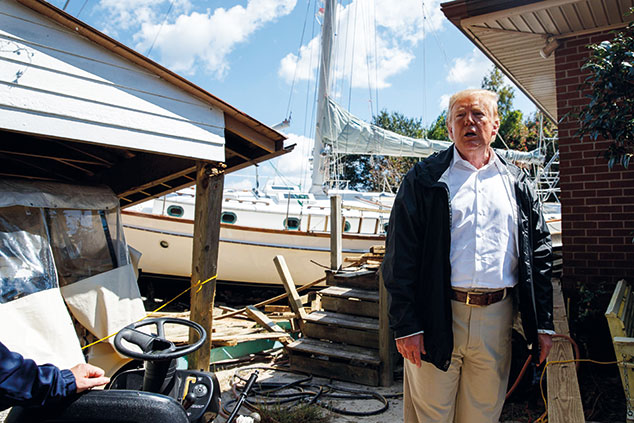
On Monday, the United Nations issued “its most urgent call to arms yet for the world to confront the threat of climate change”, say Mark Landler and Coral Davenport in the New York Times.
The report by the Intergovernmental Panel on Climate Change (IPCC) paints a “far more dire picture” of the consequences than previously thought and says avoiding the most catastrophic damage will require a transformation of the global economy at a speed and scale that has “no documented historic precedent”.
The authors say if greenhouse gas emissions continue at the current rate, the atmosphere will reach a critical threshold of 1.5ºC above pre-industrial levels by 2040. To prevent this happening, emissions must be reduced by 45% from 2010 levels by 2030 and by 100% by 2050. The use of coal as an electricity source needs to drop from nearly 40% to 1%-7% by 2050.
This makes Donald Trump’s position particularly worrying. He has pulled America – the world’s second largest emitter of carbon dioxide – out of the Paris climate accord. The frontrunner in Brazil’s presidential elections, Jair Bolsonaro, has vowed to remove his country, the world’s seventh largest emitter, from the pact as well.
How alarmed should we be?
This all sounds terrifying, says Ross Clark in the Spectator, but we are actually a “good deal further away from doom than we were in 2007, when the WWF said we had five years to save the world”. Last year, the International Energy Agency (IEA) set the “doomsday clock” at three years. Yet between 2007 and 2014, carbon emissions rose. If these deadlines come and go, those setting them start to “look rather foolish”.
It is also “counter-productive” since it suggests the whole thing is a hoax and reduces incentives to curb emissions. And ironically, it is the US, the “international pariah”, rather than “goody-goody” Germany that has cut emissions over the past two decades.
It’s true that US emissions have fallen because of the expansion of renewables, says Eugene Robinson in the Washington Post. But Donald Trump’s policies are “designed to reverse that trend” by increasing reliance on coal. More broadly, the IPCC’s new report “strikes a different tone” than previous ones – despite its dry, factual language – with worrying predictions of declining fisheries, failing crops, rising disease, economic dislocation and greater political instability.
The report isn’t a “cheery read”, says The Times, but we shouldn’t be too despondent. Such projections “largely ignore the successes of climate-change efforts that are already under way”, not least by Britain which, between 2012 and 2017, cut its emissions to pre-1890s levels by reducing coal’s share of power to the British grid from 40% to 7%. Today, China, which generates more than 80% of its electricity from fossil fuels, is the “single biggest contributor to global carbon emissions” – and Beijing plans to “slash” coal’s contribution to 11% by 2050.
A “little-noticed treaty”, the Kigali amendment, also provides hope, says Fiona Harvey in the Guardian. This global pact, which comes into force on 1 January, will “drastically reduce hydrofluorocarbons (HFCs)”, which are prime examples of short-lived climate pollutants that break down relatively quickly, but are extremely damaging. Some HFCs have a global warming potential more than 11,000 times that of CO2.
Slashing them could reduce global warming by as much as 0.5ºC. That won’t be enough to “avoid the worst effects of climate change if we continue to burn fossil fuels, but it could buy humanity some much-needed time while carbon emissions are brought under better control”.